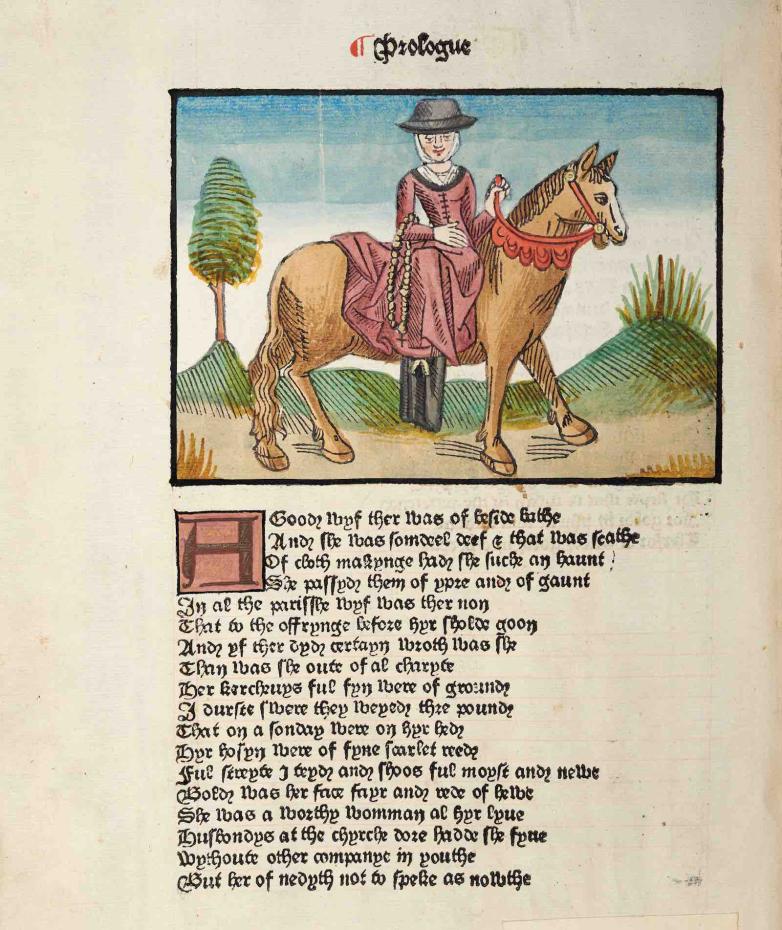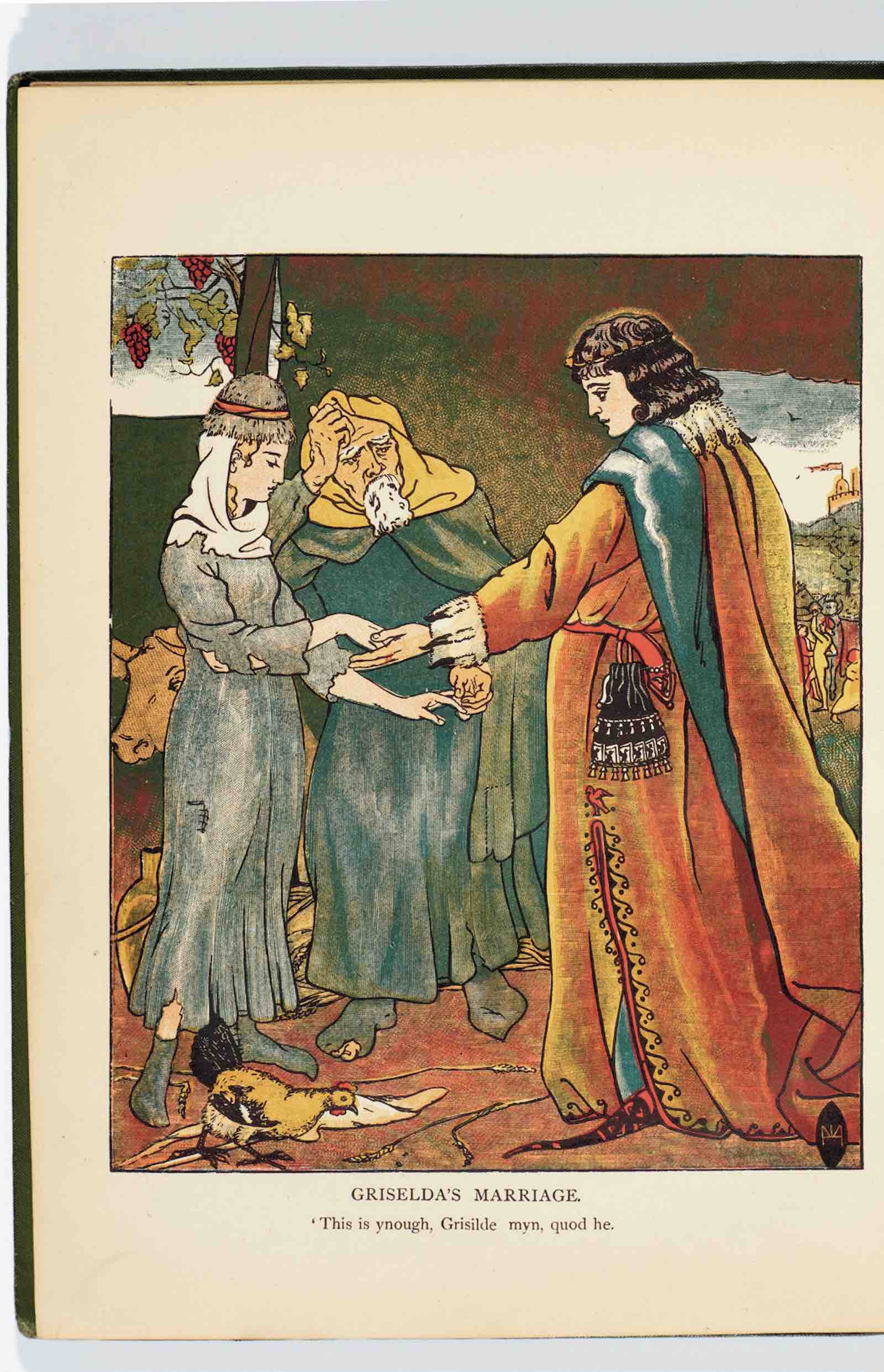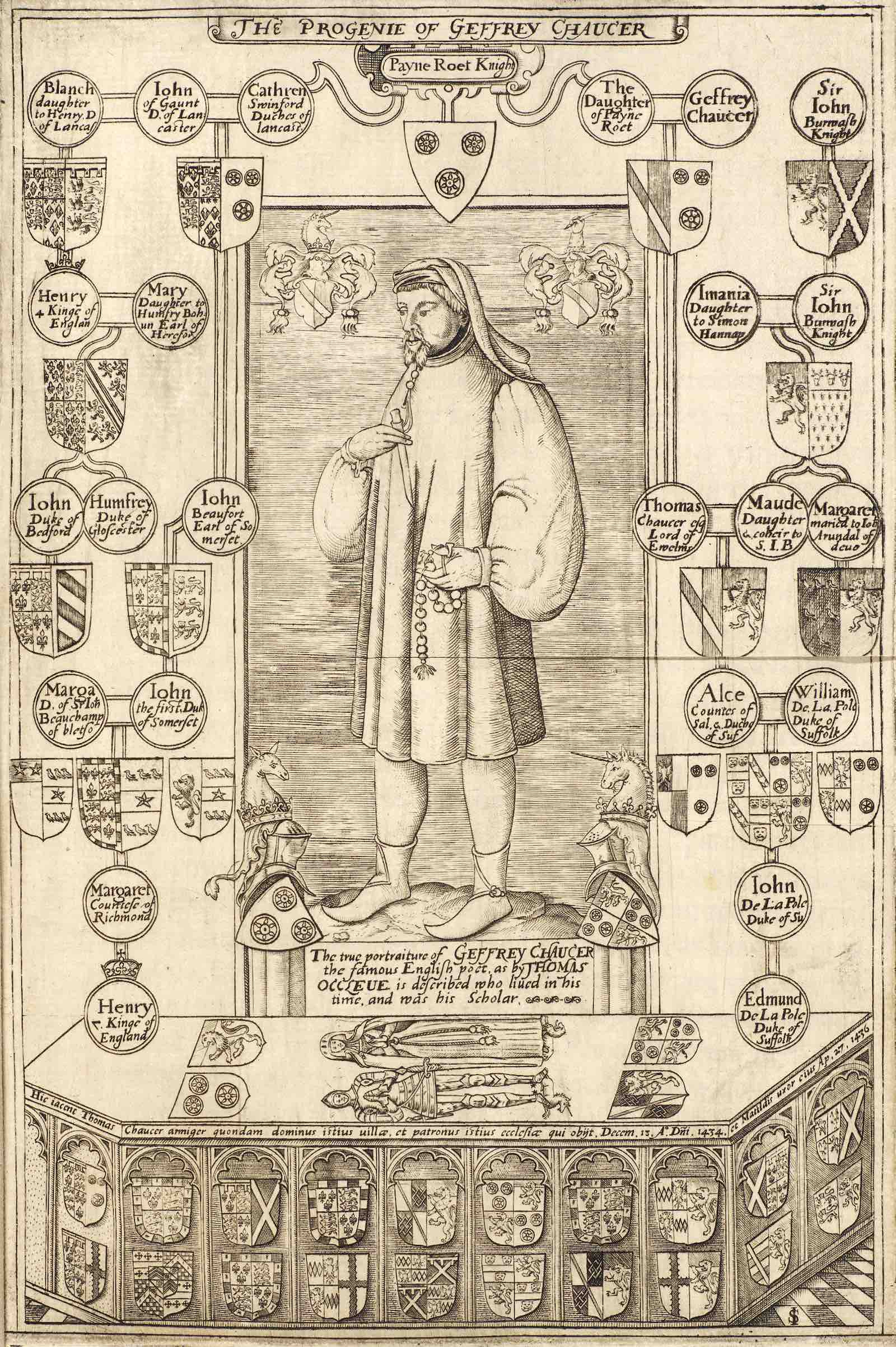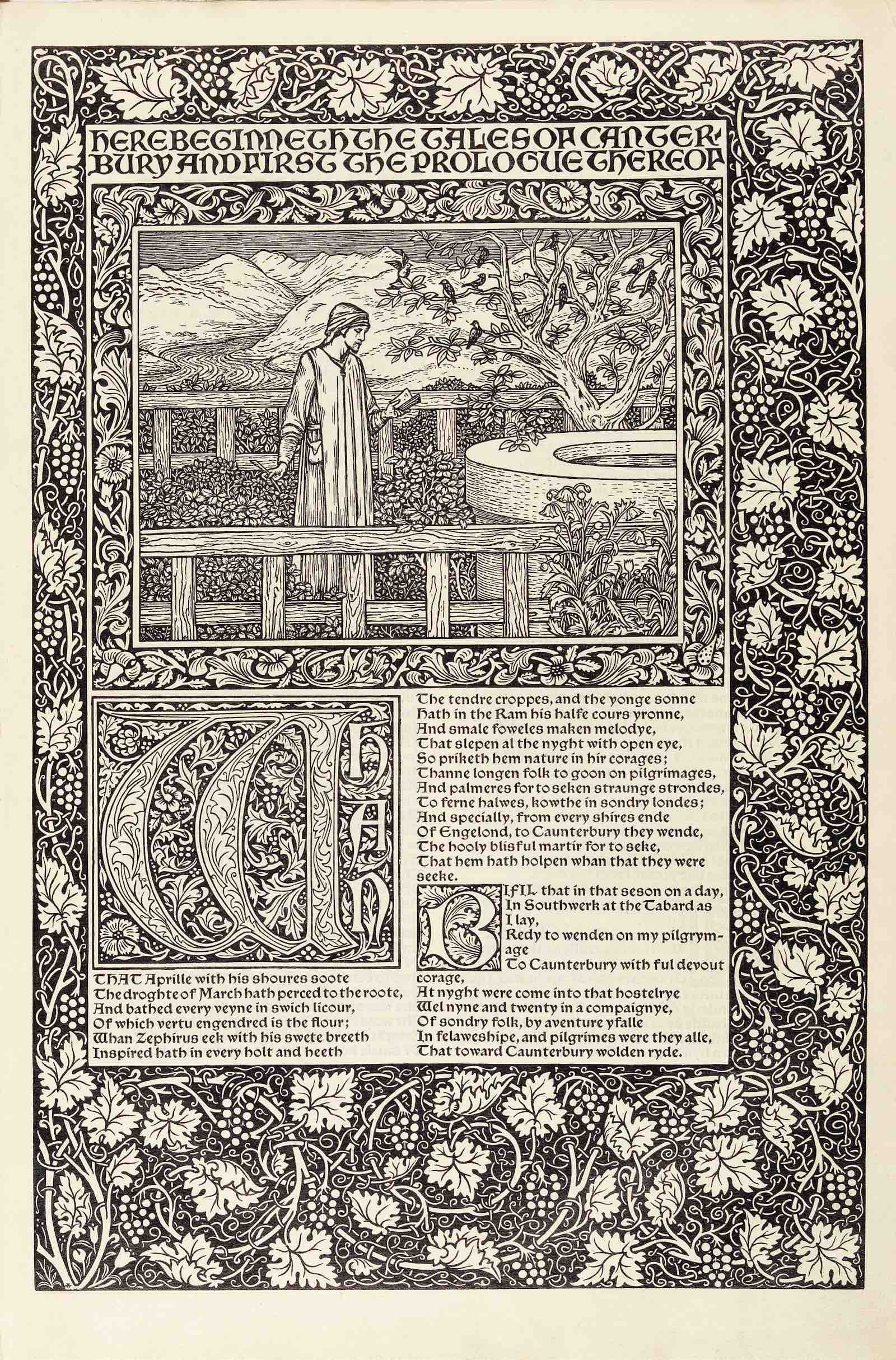In the centuries after its initial publication, The Canterbury Tales was translated and interpreted in various ways and adapted into contemporary literary styles by popular poets and writers such as John Dryden and Alexander Pope, but they were also heavily censored – 18th century poets often removed the more risqué parts. This exhibition will also feature multiple copies of The Wanton Wife of Bath, an anonymous 16th century ballad based on Chaucer’s character which was frequently banned for its anti-authority stance but appeared in numerous printings over the centuries.
The exhibition will show how Chaucer’s work was adapted for a changing Britain. One of the most stunning objects is the Pre-Raphaelite Kelmscott Chaucer by William Morris and Edward Burne-Jones. This part of the exhibition will highlight how Chaucer’s work was printed and disseminated across the globe in an attempt to assert British culture and values across the expanding Empire. At the same time, in Britain, Chaucer’s work was adapted for children in dozens of new versions, many by women, which censored the more salacious lines and tales in favour of a version that focused on the aspects of his work that were seen as morally beneficial for the development of children’s characters.
Part of the exhibition focuses on the engagement that women have had with Chaucer’s texts over the years. While they were always involved in reading and listening to Chaucer’s texts, in recent centuries women have had much more creative involvement in illustrating Chaucer, writing novels and poems based on his texts, and producing scholarship about Chaucer. The exhibition showcases items including contemporary Chaucerian cartoons drawn by women, Maria Edgeworth’s Chaucerian novel The Modern Griselda, the first illustration of Chaucer’s work by a woman (Lady Diana Beauclerk), and artistic lettrines by Lucia Joyce (daughter of James Joyce).
While many early editions and scholarship sought to portray Chaucer as a quintessentially ‘English’ figure, his multilingual background and multicultural experience as a diplomat challenge this preconception of his work’s ‘Englishness’. Chaucer’s access to Bocaccio and Italian literature, for example, not only significantly informs his writing, but reinforces the idea that Chaucer’s work emerged from a European rather than ‘English’ heritage. The exhibition displays multilingual medieval manuscripts, and examples of Chaucer drawing on other languages and cultures such as a manuscript of his scientific Treatise on the Astrolabe, based on a text originally written by a Persian Jewish author. Elsewhere on display will be later translations of Chaucer’s work into Latin, Russian, Ukrainian, Japanese, French, Esperanto, Korean, and other languages.
The exhibition concludes with contemporary responses to Chaucer’s work including:
- Zadie Smith’s play The Wife of Willesden, which updates the challenging Wife of Bath’s Prologue and Tale to a contemporary diasporic setting
- Paul Johnson’s riotous popup book Serenade to Chaucer which features richly detailed three-dimensional scenes of the rooms and spaces of The Miller’s Tale
- Virtual Chaucer, an interactive storytelling experience made in collaboration by the University of Oxford, Creation Theatre and Charisma AI, in which the player/reader can talk and interact with the pilgrims in the Tabard Inn
"Chaucer’s poetry remains extraordinarily influential today, both here and around the world, " said Professor Marion Turner, curator of Chaucer Here and Now. "In the Canterbury Tales, Chaucer emphasises the importance of listening to diverse voices, views, and perspectives. It seems appropriate, then, to see just how varied responses to his own work have been! This exhibition brings together a fabulous range of manuscripts, books, and other things – it is a unique celebration not only of one of the best poets ever to have written, but also of the power of readers to create new, vibrant things of wonder, inspired by the past."
The Weston Library will also be hosting a series of events focusing on Chaucer and his legacy. In February 2024 poet Patience Agbabi will give a reading of poems based on Chaucer’s work, and theatre group Creation Theatre Company, known for site-specific theatre adaptations, will be staging excerpts from Zadie Smith’s play The Wife of Willesden within the library.
To accompany the exhibition Bodleian Library Publishing is releasing Chaucer Here and Now, edited by Marion Turner. Featuring beautiful illustrations of early manuscripts and rare editions, the book gives a picture of how varied adaptations of and responses to his work have been, in a fascinating and authoritative collection of essays.



















